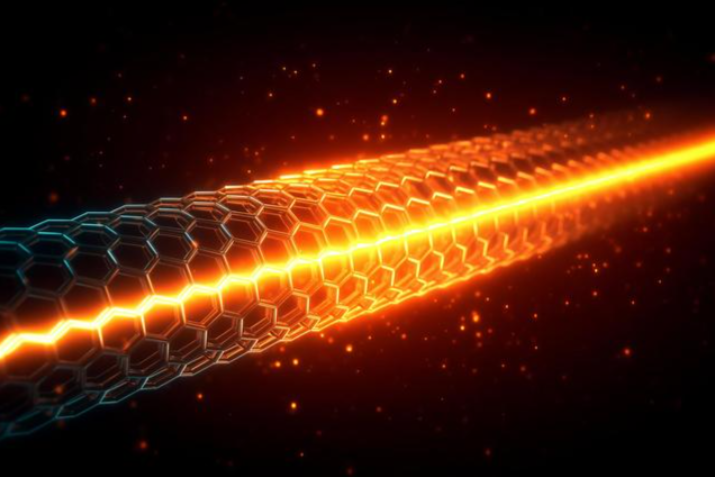Introduction
As electronic devices continue to miniaturize while increasing in power density, thermal management becomes a bottleneck for performance and reliability. A core component of thermal design is the Thermal Interface Material (TIM) — the layer between heat-generating chips and heat sinks. Traditional materials like silicone grease or metallic pastes are reaching their limits. Carbon nanotubes (CNTs) offer a new frontier in TIM technology, delivering ultra-high thermal conductivity, durability, and nano-scale contact compliance.

1. What Makes CNTs Ideal for TIMs?
-
Thermal Conductivity: CNTs exhibit values >3000 W/m·K (for SWCNTs), vastly superior to most polymers or even metals
-
High Aspect Ratio: Ensures efficient heat conduction pathways even at low loading levels
-
Mechanical Resilience: CNTs maintain thermal contact even under pressure, reducing contact resistance over time
-
Electrically Tunable: Can be used in insulating or conductive TIM formulations
2. Types of CNT-Based TIMs
a. CNT-Polymer Composites
-
Epoxy + CNT paste: Used for CPU, GPU packaging
-
Silicone grease + CNTs: Improved spreadability and heat flow
-
Challenges: Dispersion, agglomeration prevention
-
Solutions: Functionalization (COOH, NH₂), sonication, surfactant blending
b. Vertically Aligned CNT Arrays (VA-CNTs)
-
CNTs grown perpendicularly from substrate
-
Act as compressible thermal “springs”
-
Offer ultra-low thermal resistance
-
Applicable in high-power electronics (e.g., IGBTs, RF modules)
c. CNT Films and Sheets
-
Flexible conductive sheets for wearable electronics, LED panels
-
Sometimes combined with graphene to balance conductivity and flexibility
3. Performance Comparison
| TIM Material | Thermal Conductivity (W/m·K) | Electrical Conductivity | Flexibility | Stability |
|---|---|---|---|---|
| Traditional Grease | 1–4 | Low | Medium | Poor (dry out) |
| CNT-Epoxy Composite | 5–20 | Adjustable | Good | High |
| VA-CNT Array | >50 | High | Excellent | Very High |
4. Application Areas
-
Consumer Electronics: Smartphones, laptops, gaming consoles
-
Data Centers: Thermal pads for high-density CPU/GPU boards
-
Electric Vehicles (EVs): Power electronics cooling
-
LED Modules: Maintaining brightness and lifespan
-
5G & RF Modules: Low-profile, high-efficiency heat spreaders
5. Case Studies
-
IBM: Demonstrated vertically aligned CNT TIMs with 10x lower thermal resistance than silver paste
-
Toshiba: Integrated CNT grease in laptop CPUs for noise-free passive cooling
-
Chinese EV suppliers: Exploring CNT films in battery management system (BMS) heat sinks
6. Manufacturing and Integration
-
Growth Methods: CVD is used for aligned arrays; solution blending for composites
-
Scalability: Pilot-scale batches are now available; roll-to-roll fabrication of CNT sheets is under progress
-
Cost Trends: CNT paste costs have dropped to <$20/kg in composite form
7. Challenges and Future Directions
-
Contact Resistance Stability: Research is ongoing on maintaining intimate contact under thermal cycling
-
Mechanical Fatigue: Addressed via hybrid structures with CNT + graphene + polymer
-
Regulatory and Safety: Ensuring CNTs are immobilized in safe matrices
Conclusion
CNT-based TIMs are no longer experimental—they are being evaluated and adopted in high-performance electronics where thermal efficiency is critical. With increasing demand from consumer devices, electric vehicles, and high-power systems, CNT thermal interface materials promise to redefine heat transfer efficiency, unlocking performance and longevity in the next generation of electronic hardware.

